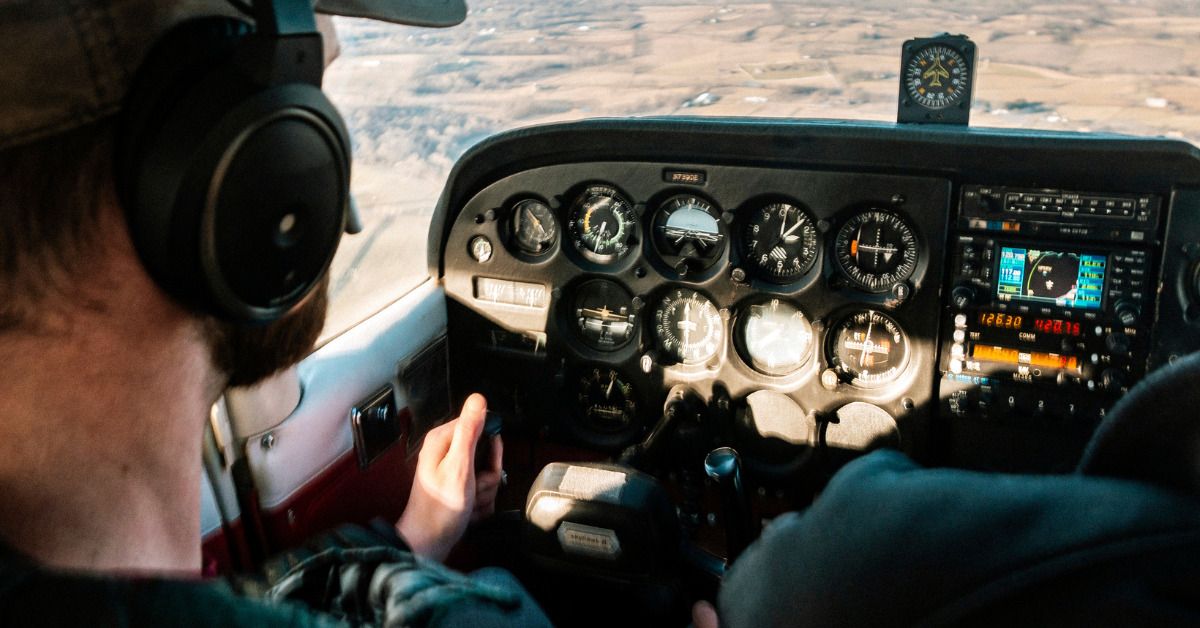One of the most common questions aviation students ask is what class of medical certificate they should try to obtain. Let’s look at the differences for each of the classes when visiting an Aviation Medical Examiner along with the Air Traffic Controller Medical Exam. Note that for brevity this blog uses years instead of months for certificate validity. In actuality, certificates are valid until the last day of the relevant month.
The examination for a Third-Class Medical Certificate has the least stringent requirements. This certificate is for private pilots who fly for pleasure and/or business but not for hire. The distant vision requirement is 20/40 (correction is allowed) in each eye and with both eyes together. There is no EKG required for a Third-Class, nor is intermediate vision testing required. The greatest difference between this class and others is how long the certificate is valid. A Third-Class Medical Certificate obtained under 40 years of age is valid for five years, and at or over 40 years of age is valid for 2 years.
A Second-Class Medical Certificate is for second-in-command airline pilots and non-airline commercial pilots. This Medical Certificate is valid for 1 year, regardless of pilot age. The distant vision requirement is 20/20 (correction is allowed) in each eye and with both eyes together. Beginning at age 50, the intermediate vision requirement is 20/40 (correction is allowed) in each eye and with both eyes together. There is no EKG required for a Second-Class.
A First-Class Medical Certificate is for airline captains. This Medical Certificate is valid for 1 year if obtained before age 40 and 6 months at age 40 and up. The distant vision requirement is 20/20 (correction is allowed) in each eye and with both eyes together. Beginning at age 50, the intermediate vision requirement is 20/40 (correction is allowed) in each eye and with both eyes together. One EKG is required between ages 35 and 39 and is required annually beginning at age 40.
The Air Traffic Controller Medical is most similar to obtaining a Second-Class Medical Certificate; however, the Controller does not actually receive the certificate, they just go through mostly the same examination. Controllers also need to have their hearing tested by audiogram not just spoken voice like pilots. Controller candidates may need an EKG but this is specified by the sponsoring agency in the paperwork sent with the candidate.
Many aspects of the Aviation Medical Examiner’s examination are the same regardless of Class or ATC. These requirements include assessments of urine, blood pressure, pulse, near vision, field of vision, and a physical examination. Abnormal findings are significant regardless of Class and will be noted and sent to the FAA.
Because there are very few differences between the assessment for the different Classes of Medical Certificate, the FAA prefers pilots apply for a First Class Medical Certificate if there is even a slight chance of them going to the airlines in the future. A First-Class Medical Certificate obtained before age 40 is valid for one year then is valid as a Third-Class Medical for years 2 through 5.
Note that the durations listed in this blog are for pilots that do not have any medical issues or a Special Issuance. If a pilot has a Special Issuance, the FAA letter granting the Special Issuance may indicate the time limitation of the included certificate and the maximum valid duration of future certificates issued by the Aviation Medical Examiner. This usually occurs with AME Assisted Special Issuances (AASIs) and ensures that the pilot returns more frequently than they would otherwise to ensure ongoing stability of the condition. Moreover, a Special Issuance trumps any of the usual valid durations. It is important for a pilot to read the Special Issuance letter carefully to ensure an understanding of what is due when and how long the medical certificate is valid. Pilots should also be able to collaborate with and relay on their AME to stay on track for all required tests, documents, and examinations.
Finally, it is worth noting a few things about the physical medical certificate itself. Be sure to review your certificate carefully before you sign it. Make sure it is for the correct class, has the correct issue date, and that your name and address are correct. Only the original hand-signed document is the valid medical certificate, not photocopies or photos of it. Be sure not to cut on the vertical line in the middle of the top half of the document or it will be invalidated; this line is for folding not cutting. If the certificate is damaged or lost, the only ways to obtain a new certificate is to request one directly from the FAA or go for a new exam to obtain a new certificate.
If you have questions about obtaining an aviation medical certificate, please contact us at Aviation Medicine by phone (727) 648-2402, or email aweinberg@medavex.org.

